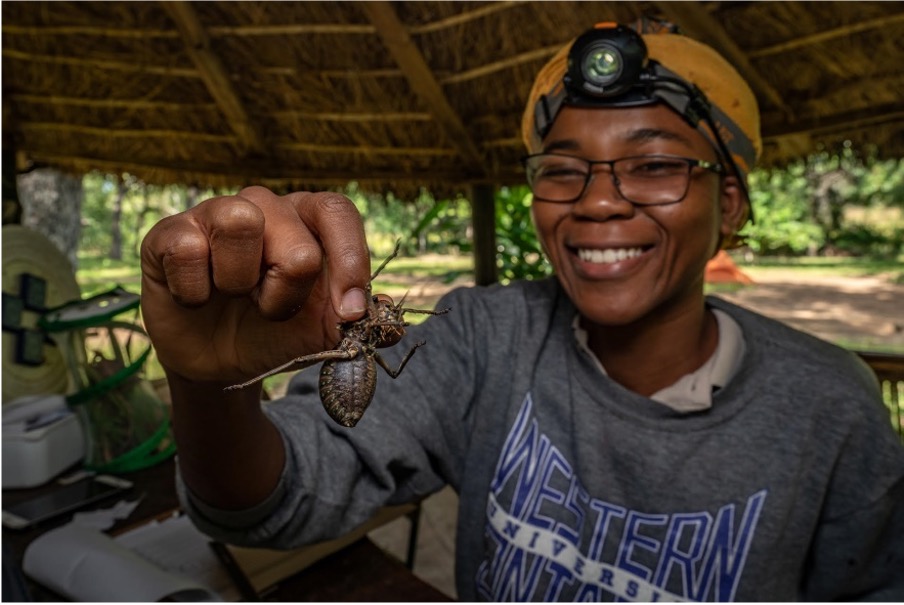Laura Macamo is a specialist in conservation genetics, leading the genetic classification of wildlife species in the Gorongosa National Park. Maramo carried WINGS Flag #33 on her expedition to study beetle diversity in Niassa Special Reserve, in Niassa, Mozambique.
On expedition, Laura surveyed the diversity of beetles in the largest conservation area of Mozambique—her home country–with the goal of producing a comprehensive list of species of beetles that occur in the Niassa Special Reserve. There is no list of invertebrate species published from the area, undermining the efforts of nature conservation. Beetles are important members of the natural ecosystem and provide services like organic matter recycling. Information on beetle community composition is also useful to guide the protection in areas of conservation that allow hunting.
Laura was the sole scientist on this project, and utilizing this study for her PhD dissertation project. She recruited local students as well as community members to participate in the expedition, believing that the community participation creates more curiosity to understand the importance of invertebrates as well as help in their protection.
The Niassa Special Reserve is located in an undeveloped area of Mozambique, where traditional practices like marrying underage girls to older men are still at play, especially in isolated communities like the ones inside the reserve. It is difficult for people in this community to visualize alternatives, and for girls to see successful female role models. “As a Mozambican woman myself,” Laura reflected on her own journey, “I faced difficulties in accessing education that were put upon me by my own community. However, other women lifted me up and presented themselves as examples of a successful life in research. Carrying the WINGS Flag on my expedition opens unique opportunities. I find in this project an opportunity to give back— for local young women who would not be able to be trained to participate in scientific research and gain exposure.”
Laura is currently in a PhD program at Imperial College of London in cooperation with the Natural History Museum of London to further solidify her career in conservation biology.
